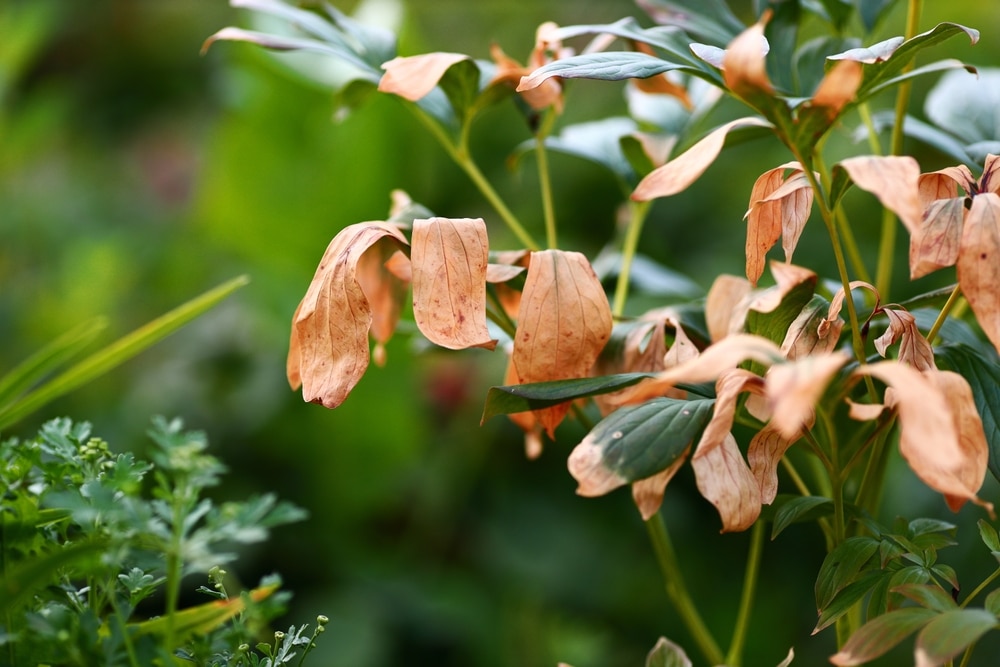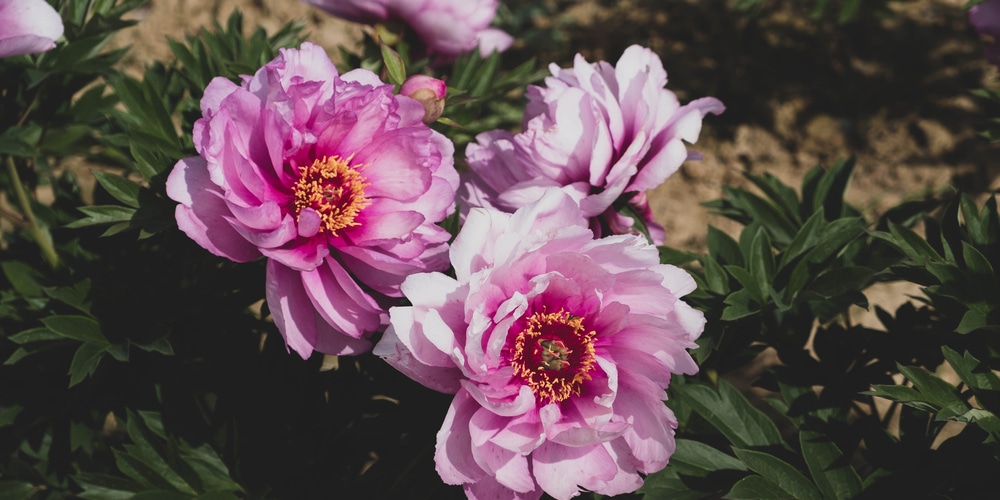Peonies are beautiful flowering plants that are reasonably hardy but can be prone to root rot if overwatered. Root rot occurs when too much water accumulates in the soil and suffocates the plant’s roots, so it’s essential to keep an eye out for signs that your peonies may be overwatered. Let’s look at the most common signs of overwatering peonies.
Signs of overwatering peonies
If your peonies are wilting even after you’ve watered them, this can be a sign that they’re receiving too much water. Some key indicators include limp stems, yellowing leaves, and rotting roots. Unfortunately, peonies are very hard to save once they start to wilt, so it’s a good idea to learn how to care for your plants and how much water they need before issues arise.
Yellow or brown leaves may also indicate that the soil is too wet. The plant’s foliage is likely to turn brown before they start to wilt. At this stage, you may be able to save your plant by reducing the amount of water you provide.
If you check under your plants and see brown or mushy roots, this indicates that your plant is suffering from root rot. It may be time to reduce watering or find a new location to plant your peonies.
How to prevent root rot
To prevent root rot and other problems associated with overwatering peonies, be sure to water them regularly but not excessively. Consider using a moisture sensor or other tool to help you get the right amount of water in the soil.
Alternatively, check the soil with your fingers before watering. To do this, push your finger into the ground up to the second knuckle. The soil should feel cool and moist but shouldn’t be waterlogged. If you notice any signs of overwatering, take action right away to save your plants.
You should also ensure that your peonies are growing in well-draining soil. If you have clay-like soil, it’s a good idea to add some organic matter to improve the quality of the earth.
Treating root rot
You may be able to save your plant by treating the roots with a fungicide and replanting it in well-draining soil. Ensure you put the soil in the trash rather than reusing or composting it. Never reuse soil that’s been affected by root rot, as you can cause the fungal spores to spread to other plants.
You can also try cutting off damaged sections of the roots if your plant has root rot. In most cases, root rot will end up killing a peony, and you’ll have to throw your plant away.
How to water peonies
Peonies generally need to be watered about once a week. You can give your plants a good watering and then leave them to dry out for seven days. If you’re growing your plants indoors or on a balcony, patio, or decking, you should generally stick to this schedule unless you get very warm weather.
When growing peonies outdoors, you may find that the plants require slightly less water depending on how much rain there’s been recently.
Conclusion
Overwatering a peony is a very common mistake that many beginner gardeners make. Peonies are hardy plants that can cope with a hot climate, but they can be affected by root rot if they are overwatered.
Unfortunately, peonies are very hard to save once they get root rot. As with many things in life, prevention is better than cure, and it’s a good idea to find out how to correctly care for your peonies to avoid problems. In general, peonies should be watered once a week; this may need to be altered slightly depending on your climate and the weather at the time.
You may also be interested in finding out how to plant peonies in the fall.

